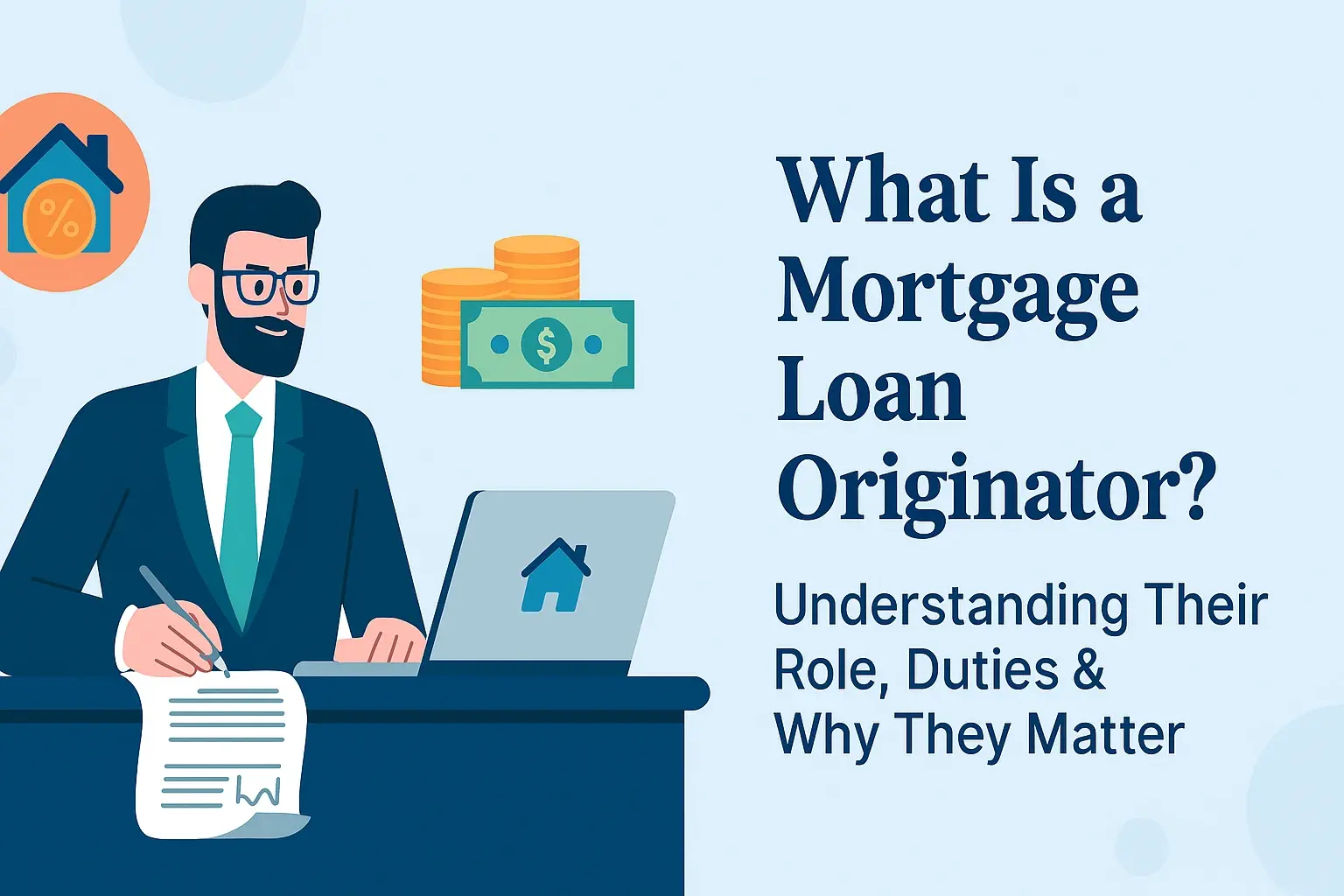-
Posted on: 01 Aug 2024

-
Securing a loan with a 760 credit score opens doors to favorable terms and higher borrowing limits. This guide will break down precisely how much you can expect to borrow, the types of loans available, and how to maximize your loan potential with this excellent credit rating.
Understanding Credit Scores and What a 760 Means
Your credit score is a three-digit number that lenders use to assess your creditworthiness. It's a snapshot of your financial history, reflecting how responsibly you've managed debt. Scores typically range from 300 to 850. A score of 760 falls into the "excellent" or "very good" category, depending on the scoring model used. For most lenders, a 760 credit score signifies a low risk borrower, meaning you have a proven track record of paying bills on time and managing credit responsibly. This excellent score is a significant asset when seeking any type of loan, from personal loans and mortgages to auto loans and business financing.
The FICO and VantageScore Scales
The two most common credit scoring models are FICO and VantageScore. While their methodologies differ slightly, they generally categorize scores similarly. A 760 score is consistently considered strong on both scales. FICO scores are often broken down as follows:
- Exceptional: 800-850
- Very Good: 740-799
- Good: 670-739
- Fair: 580-669
- Poor: 300-579
VantageScore uses a similar framework, with 760 typically falling within the "Very Good" to "Excellent" range. Regardless of the specific model, a 760 score signals to lenders that you are a reliable borrower who is likely to repay borrowed funds.
Why a 760 Score is a Game Changer
Having a 760 credit score provides a significant advantage in the lending landscape. It typically qualifies you for the lowest interest rates, the most favorable loan terms, and the highest borrowing limits. Lenders are more willing to extend larger sums of money to individuals with a proven history of financial responsibility because the risk of default is substantially lower. This means you can often borrow more and pay less in interest over the life of the loan compared to someone with a lower credit score.
Types of Loans Available with a 760 Credit Score
A 760 credit score opens up a wide array of loan options, each with its own typical borrowing limits and requirements. Understanding these different loan types is crucial to determining how much you can realistically borrow for your specific needs.
Personal Loans
Personal loans are unsecured loans that can be used for almost any purpose, such as debt consolidation, home improvements, medical expenses, or major purchases. With a 760 credit score, you can expect to qualify for:
- Higher Loan Amounts: Lenders are often comfortable offering personal loans ranging from $5,000 up to $100,000 for borrowers with excellent credit. Some specialized lenders may even go higher for well-qualified individuals.
- Lower Interest Rates: Expect to receive some of the best Annual Percentage Rates (APRs) available for personal loans, often in the single digits or low double digits.
- Flexible Repayment Terms: You'll likely have a wider choice of repayment periods, from a few years to up to seven years, allowing you to tailor your monthly payments.
Mortgages
For home buyers, a 760 credit score is highly advantageous. It significantly impacts your ability to secure a mortgage and the terms you'll receive. With this score, you can expect:
- Access to the Best Mortgage Rates: A 760 score often qualifies you for the lowest interest rates on mortgages, saving you tens of thousands of dollars over the life of a 15- or 30-year loan.
- Higher Loan-to-Value (LTV) Ratios: Lenders may be willing to offer higher LTV ratios, meaning you might be able to borrow a larger percentage of the home's value, potentially requiring a smaller down payment.
- Wider Range of Mortgage Products: You'll likely be eligible for a variety of mortgage types, including conventional loans, FHA loans (though often unnecessary with such a good score), VA loans, and jumbo loans.
- Estimated Borrowing Power: The amount you can borrow for a mortgage is heavily dependent on your income and debt-to-income ratio, but a 760 score maximizes your potential. For example, a borrower with a $100,000 annual income and a 43% DTI could potentially qualify for a mortgage in the $400,000-$500,000 range, with the 760 score securing the best terms.
For more detailed information, explore our guide on Mortgage Options for Excellent Credit.
Auto Loans
Purchasing a vehicle becomes much more affordable with a 760 credit score. You can anticipate:
- Competitive Interest Rates: Auto loan rates for excellent credit are typically very low, often below 5% APR, making car payments more manageable.
- Higher Loan Amounts: You can finance a larger portion of the vehicle's cost, potentially covering the entire price of many new or used cars.
- Extended Loan Terms: While shorter terms mean lower interest paid, longer terms can lower monthly payments, and a 760 score gives you the flexibility to choose.
Home Equity Loans and HELOCs
If you own a home and have built up equity, a 760 credit score makes it easier to access that equity. Home equity loans and Home Equity Lines of Credit (HELOCs) allow you to borrow against your home's value.
- Access to Significant Funds: Lenders typically allow you to borrow up to 80-85% of your home's appraised value, minus any outstanding mortgage balance. With a $400,000 home and a $200,000 mortgage, you could potentially borrow up to $120,000-$140,000.
- Favorable Rates: While secured by your home, the rates are still competitive due to your strong credit.
Business Loans
For entrepreneurs, a 760 credit score is a significant asset when seeking funding for a business. While business loan approval is more complex than personal loans, excellent credit significantly improves your chances and terms.
- SBA Loans: A 760 score makes you a prime candidate for Small Business Administration (SBA) loans, which often have favorable terms and government backing.
- Traditional Business Loans: Banks and credit unions are more likely to approve larger loan amounts for businesses with strong personal credit.
- Working Capital and Expansion Funds: You could potentially secure loans ranging from tens of thousands to hundreds of thousands of dollars, depending on your business plan and revenue.
Key Factors Influencing Your Loan Amount
While a 760 credit score is a powerful indicator of your creditworthiness, it's not the sole determinant of how much you can borrow. Lenders consider a holistic view of your financial situation. Understanding these factors will help you accurately gauge your borrowing potential.
Income and Employment Stability
Your ability to repay a loan is directly tied to your income. Lenders will scrutinize your income documentation (pay stubs, tax returns, bank statements) to ensure you have sufficient, consistent earnings to cover loan payments. A higher, stable income generally allows for larger loan amounts.
- Verifiable Income: Lenders prefer borrowers with steady employment and verifiable income sources. Freelancers or those with irregular income may need to provide more extensive documentation.
- Income-to-Debt Ratio: This is a critical metric. Lenders assess how much of your gross monthly income is already committed to existing debt payments.
Debt-to-Income Ratio (DTI)
Your DTI is the percentage of your gross monthly income that goes towards paying your monthly debt obligations. Lenders use DTI to gauge your capacity to take on new debt. A lower DTI is always preferable.
- Calculation: DTI = (Total Monthly Debt Payments / Gross Monthly Income) x 100.
- Ideal DTI: For most loans, lenders prefer a DTI of 43% or lower. With a 760 credit score, some lenders might be more flexible, but a lower DTI significantly increases your borrowing power. For instance, if your gross monthly income is $6,000 and your total monthly debt payments (including the potential new loan) are $2,000, your DTI would be 33.3%. This leaves substantial room for a larger loan.
Loan Purpose and Type
The reason you need the loan and the type of loan you're applying for will significantly impact the maximum amount you can borrow. Secured loans, like mortgages and auto loans, which are backed by collateral, generally allow for higher borrowing amounts than unsecured personal loans.
- Mortgages: Typically allow the largest loan amounts, as they are secured by the property itself.
- Auto Loans: Secured by the vehicle, allowing for financing of the car's value.
- Personal Loans: Unsecured, so borrowing limits are generally lower and more dependent on income and creditworthiness.
- Business Loans: Amounts vary widely based on business needs, revenue, and collateral.
Collateral (for Secured Loans)
For secured loans, the value of the collateral plays a crucial role. Lenders will assess the value of the asset (e.g., a house for a mortgage, a car for an auto loan) to determine the maximum loan amount they are willing to offer. Loan-to-value (LTV) ratios are used here.
- Loan-to-Value (LTV): This ratio compares the loan amount to the appraised value of the collateral. For example, a 90% LTV on a $300,000 home means you could borrow up to $270,000. A 760 credit score often allows for higher LTV ratios.
Existing Debts
Beyond your DTI, lenders will look at the total amount of debt you currently carry. High balances on credit cards, existing loans, or other financial obligations can reduce your capacity to take on more debt, even with a strong credit score.
Relationship with the Lender
If you have a long-standing, positive relationship with a particular bank or credit union, they might be more willing to extend a larger loan amount or offer more flexible terms. Loyalty and a history of responsible financial behavior with a specific institution can sometimes work in your favor.
Estimating Your Borrowing Power: The Numbers
Quantifying the exact loan amount you can get with a 760 credit score requires a personalized assessment, but we can provide strong estimates based on common lending practices in 2025. Remember, these are guidelines, and your specific situation will dictate the final figures.
Personal Loans: 2025 Estimates
With a 760 credit score, you are in an excellent position for personal loans. Most lenders will offer you competitive rates and terms. Here's a typical range:
- Minimum Borrowing Amount: $1,000 - $2,000
- Maximum Borrowing Amount: $50,000 - $100,000. Some specialized lenders may go up to $150,000 or even $200,000 for borrowers with exceptionally high incomes and very low DTIs.
- Interest Rates (APR): Typically range from 6% to 18%, with a 760 score likely securing you rates in the lower half of this spectrum, potentially 6-12%.
- Repayment Terms: 1 to 7 years.
Example: A borrower with a $7,000 monthly income, $1,500 in existing monthly debt payments, and a 760 credit score could potentially qualify for a $50,000 personal loan with an APR around 8% over 5 years. Their DTI would be approximately (1500+833)/7000 = 33.3%, which is very favorable.
Mortgages: 2025 Estimates
Mortgage amounts are heavily dependent on income, property prices, and your DTI. A 760 credit score is considered excellent for mortgage qualification.
- Loan-to-Value (LTV): Typically up to 95-97% for conventional loans, meaning a down payment as low as 3-5%.
- Interest Rates: In early 2025, average 30-year fixed mortgage rates for excellent credit might hover around 6.5% to 7.5%, significantly lower than for those with lower scores.
- Borrowing Capacity: This is where income and DTI are paramount. A common rule of thumb is that your total housing payment (principal, interest, taxes, insurance - PITI) should not exceed 28% of your gross monthly income, and your total debt (including PITI) should not exceed 36-43%.
Example: An individual earning $120,000 annually ($10,000/month) with $1,000 in existing monthly debt payments and a 760 credit score could potentially qualify for a mortgage. If they aim for a total debt DTI of 40%, they have $4,000 available for total debt payments. After deducting their $1,000 existing debt, they have $3,000 for PITI. This could support a loan of approximately $450,000 to $550,000, depending on property taxes, insurance costs, and prevailing interest rates (e.g., at 7% interest over 30 years, a $3,000 monthly payment supports a loan of about $445,000).
Auto Loans: 2025 Estimates
Financing a vehicle is highly accessible with a 760 credit score.
- Loan Amounts: Generally, you can finance the full purchase price of most new and used vehicles. Loan limits can extend to $100,000 or more for luxury vehicles.
- Interest Rates (APR): For new cars, rates could be as low as 4.5% to 6.5%. For used cars, rates might be slightly higher, around 5.5% to 7.5%.
- Loan Terms: Typically 36 to 72 months, with longer terms available for higher-priced vehicles.
Example: A borrower with a 760 credit score looking to buy a $40,000 car could secure a loan with an APR around 5.5% for 60 months, resulting in a monthly payment of approximately $790.
Home Equity Loans and HELOCs: 2025 Estimates
These are dependent on your home's value and equity.
- Borrowing Limit: Typically up to 80-85% of your home's appraised value, minus your outstanding mortgage balance.
- Example: A $500,000 home with a $200,000 mortgage balance and 80% LTV limit could allow for a loan up to $400,000 - $200,000 = $200,000.
- Interest Rates: Often variable for HELOCs, starting around 7-9%, and fixed for home equity loans, also in a similar range.
Business Loans: 2025 Estimates
Business loan amounts vary significantly. A 760 credit score is a strong personal guarantee for lenders.
- SBA Loans: Can range from $5,000 to $5 million, with personal credit being a key factor for approval.
- Term Loans: Can range from $10,000 to $500,000+, depending on the lender and business's financial health.
For more detailed projections, consult our Loan Amount Calculator.
Strategies to Maximize Your Loan Amount
Even with an excellent 760 credit score, you can take proactive steps to ensure you secure the largest possible loan amount and the most favorable terms. These strategies focus on presenting your financial profile in the best possible light.
1. Improve Your Debt-to-Income Ratio (DTI)
As discussed, DTI is a critical factor. Even a small reduction can make a difference.
- Pay Down Existing Debts: Focus on aggressively paying down high-interest debts, especially credit card balances. Reducing your monthly debt obligations frees up more income for new loan payments.
- Increase Your Income: If possible, explore opportunities for a raise, a side hustle, or additional income streams to boost your gross monthly income.
2. Gather Comprehensive Financial Documentation
Be prepared to provide thorough documentation to lenders. This demonstrates transparency and allows them to quickly assess your financial stability.
- Pay Stubs: Recent pay stubs (typically the last 30 days).
- Tax Returns: Usually the last two years.
- Bank Statements: Several months of statements to show income deposits and spending habits.
- Employment Verification: Lenders may contact your employer.
- Proof of Other Income: Documentation for rental income, alimony, child support, etc., if applicable.
3. Consider a Co-signer (If Necessary)
While a 760 score is excellent, if you're aiming for an exceptionally large loan amount or have a slightly higher DTI, a co-signer with an even stronger financial profile (higher income, lower DTI, excellent credit) can bolster your application and potentially increase the loan amount approved.
4. Shop Around and Compare Offers
Do not accept the first loan offer you receive. Different lenders have different risk appetites and lending criteria. By comparing offers from multiple institutions (banks, credit unions, online lenders), you can find the one that offers the highest loan amount and the best terms for your specific situation.
- Pre-qualification: Many lenders offer pre-qualification, which involves a soft credit check and provides an estimate of loan amounts and rates without impacting your credit score.
- Rate Shopping: When you're ready to apply, do so within a short period (typically 14-45 days, depending on the credit scoring model) so that multiple hard inquiries for the same type of loan are treated as a single inquiry for scoring purposes.
5. Be Clear About Your Loan Purpose
Understand precisely why you need the loan and how much you need. Lenders are more comfortable approving loans when the purpose is clear and justifiable. Avoid vague requests; have a specific use case and amount in mind.
6. Maintain Your Credit Score
While you already have a 760, it's crucial to maintain it throughout the application process. Avoid opening new credit accounts or making large purchases on existing credit cards just before or during your loan application, as this can negatively impact your score and DTI.
7. Explore Secured Loan Options
If you're seeking a larger amount and have assets, consider secured loans. Using collateral like savings accounts, certificates of deposit, or even investments can make lenders more comfortable offering higher loan amounts, as the risk to them is reduced.
Navigating the Loan Application Process
Understanding the typical loan application process will help you prepare and move smoothly towards securing your funds. With a 760 credit score, you're well-positioned to navigate this efficiently.
Step 1: Determine Your Needs and Borrowing Capacity
Before you even start applying, clearly define how much you need to borrow and for what purpose. Use online calculators and the information in this guide to estimate your potential borrowing amount based on your income, debts, and credit score.
Step 2: Gather Your Financial Documents
As mentioned, having all necessary documents ready will expedite the process. This includes proof of income, identification, bank statements, and details of existing debts.
Step 3: Research and Compare Lenders
Identify potential lenders that specialize in the type of loan you need. Look at their interest rates, fees, loan limits, and customer reviews. Online lenders, traditional banks, and credit unions are all viable options.
Step 4: Get Pre-qualified (Optional but Recommended)
Many lenders offer pre-qualification. This involves a soft credit pull and provides an estimate of the loan amount, interest rate, and terms you might receive. It’s a great way to gauge your options without affecting your credit score.
Step 5: Submit Your Formal Application
Once you've chosen a lender, complete the formal loan application. This will involve a hard credit inquiry, which can slightly impact your credit score temporarily. Be prepared to provide detailed information about your finances, employment, and the loan's purpose.
Step 6: Underwriting and Approval
The lender's underwriting department will review your application, verify your documents, and assess your risk. With a 760 credit score, this process is often smoother and faster.
Step 7: Loan Offer and Acceptance
If approved, you'll receive a formal loan offer detailing the exact amount, interest rate, repayment term, and any fees. Review this carefully before accepting.
Step 8: Closing and Funding
Once you accept the offer, you'll sign the loan agreement. The funds will then be disbursed to you or directly to the vendor (e.g., car dealership, home seller).
For a detailed breakdown, see our Step-by-Step Loan Application Guide.
Choosing the Right Lender for Your Needs
Selecting the right lender is as important as having a good credit score. Different lenders cater to different needs and offer varying benefits. Here’s how to make an informed choice in 2025:
Online Lenders
- Pros: Often offer competitive rates, fast application processes, and quick funding. Many specialize in personal loans and have flexible eligibility criteria.
- Cons: May lack the personal touch of a traditional bank. Customer service quality can vary.
- Best for: Borrowers seeking speed and convenience, especially for personal loans.
Traditional Banks
- Pros: Offer a wide range of financial products, including mortgages, auto loans, and business loans. Building a relationship can lead to better terms.
- Cons: Application processes can be slower and more bureaucratic. May have stricter eligibility requirements.
- Best for: Those seeking comprehensive banking services, mortgages, or who prefer in-person interactions.
Credit Unions
- Pros: Member-owned institutions often offer lower interest rates and fewer fees than banks. They prioritize member benefit.
- Cons: Membership requirements may apply. Loan options might be less diverse than large banks.
- Best for: Individuals who qualify for membership and are looking for favorable rates on various loan types.
Specialty Lenders
These lenders focus on specific loan types, such as SBA loans, auto loans, or loans for specific industries. They often have deep expertise in their niche.
- Pros: Tailored products and expertise.
- Cons: May not offer other financial services.
- Best for: Borrowers with specialized financing needs.
Key Comparison Points:
When comparing lenders, focus on:
- APR (Annual Percentage Rate): This includes the interest rate plus all fees, giving you the true cost of the loan.
- Fees: Origination fees, application fees, late fees, prepayment penalties.
- Loan Limits: Ensure the lender offers the maximum amount you need.
- Repayment Terms: Flexibility in loan duration.
- Customer Service and Reputation: Read reviews and check ratings.
Common Pitfalls to Avoid with a 760 Credit Score
Even with an excellent credit score, it's possible to make mistakes that could hinder your borrowing potential or lead to unfavorable outcomes. Being aware of these pitfalls can help you maintain your advantage.
1. Assuming You'll Get Approved for Any Amount
While a 760 score opens many doors, lenders still assess your ability to repay. Your income, DTI, and the loan's purpose are critical. Don't assume you can borrow an unlimited amount; base your requests on realistic financial capacity.
2. Not Shopping Around for the Best Rates
Accepting the first offer can mean overpaying in interest. Even a small difference in APR can amount to thousands of dollars over the life of a loan, especially for mortgages and auto loans. Always compare multiple lenders.
3. Ignoring Fees
Some lenders advertise low interest rates but charge high origination or other fees. These fees can significantly increase the overall cost of the loan. Always look at the APR and the total cost, not just the advertised interest rate.
4. Applying for Too Many Loans Simultaneously
Each hard credit inquiry can slightly lower your credit score. While rate shopping for the same type of loan within a short period is usually consolidated, applying for unrelated loans or multiple credit cards can negatively impact your score and make lenders wary.
5. Not Reading the Fine Print
Loan agreements can be complex. Understand all terms and conditions, including prepayment penalties, late fees, and any clauses that could affect you. Ensure you're comfortable with all aspects before signing.
6. Overextending Your Budget
Even if a lender approves you for a large loan, it doesn't mean you can comfortably afford the payments. Always create a realistic budget to ensure the new loan payment fits within your financial means without causing undue stress.
7. Neglecting to Maintain Your Credit Score
A 760 score is excellent, but it's not permanent. Continue to manage your credit responsibly. Avoid late payments, keep credit utilization low, and monitor your credit reports for errors. A dip in your score could affect future borrowing opportunities or the terms of existing loans.
Conclusion
A 760 credit score is a powerful financial asset, significantly enhancing your ability to secure loans with favorable terms and higher borrowing limits in 2025. You are positioned to access a wide range of loan products, from substantial mortgages and auto loans to personal and business financing, often at the lowest available interest rates. Remember that while your credit score is paramount, lenders will also carefully consider your income, debt-to-income ratio, and the loan's purpose. By diligently preparing your documentation, comparing offers from multiple lenders, and understanding all loan terms, you can confidently maximize your borrowing potential. Always prioritize realistic budgeting to ensure any new loan fits comfortably within your financial capacity, safeguarding your excellent credit standing for future opportunities.










